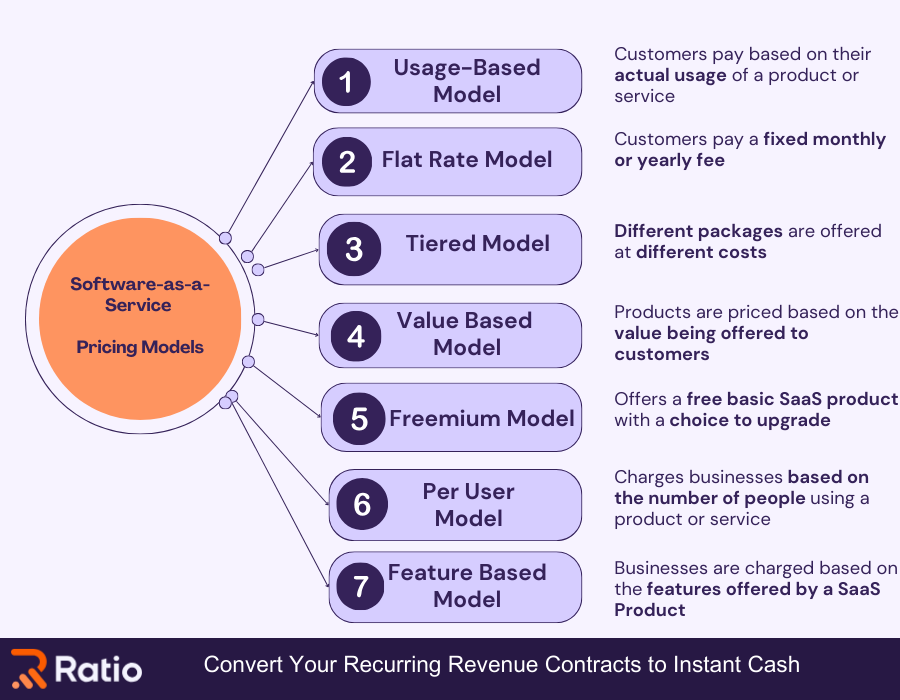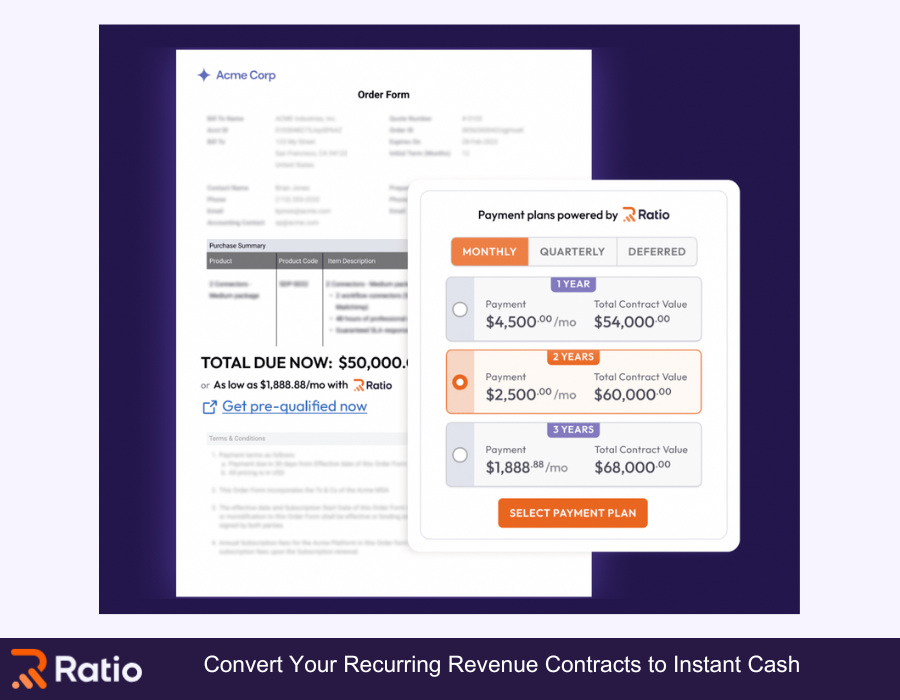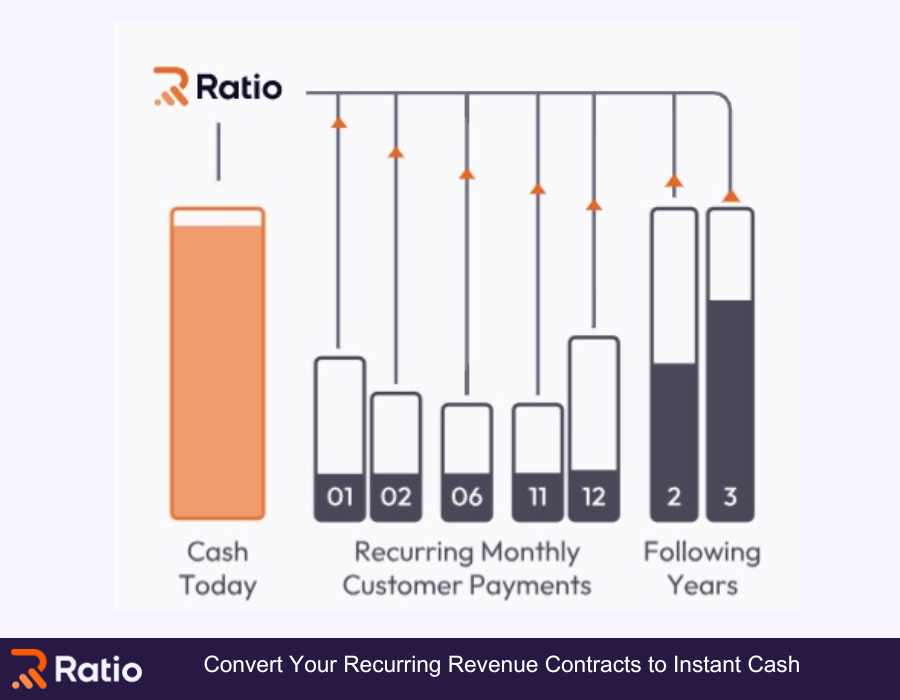Seven B2B SaaS Pricing Models and How to Choose the Right One
Research shows that SaaS companies could boost their profits by 11% by increasing their prices only by a humble 1%.
Yet, SaaS businesses often overlook effective pricing, with most companies investing just 6 hours in developing their pricing models.
This will have to change.
After working tirelessly to craft outstanding products and woo customers, failing to communicate the product's true value is a bad idea.
By walking you through the top seven B2B SaaS pricing models and highlighting their strengths and weaknesses, this article will help address this problem.
Seven Popular B2B SaaS Pricing Models
With Gartner projecting SaaS spending to increase to $243.99 billion by 2024, it is more important than ever for companies to consider effective pricing.
Here are seven popular pricing models to help you figure out the one that fits your unique business needs:

1. Usage-Based Pricing Model
Usage-based pricing is a B2B SaaS model that bills customers according to their actual usage of your product or services.
The costs are determined by usage metrics, such as storage usage or API calls, resulting in a "pay-as-you-go" approach.
AWS is one of the best-known SaaS companies that uses this pricing strategy.
Who Benefits from Usage-based Pricing?
This model works best for SaaS companies offering products that experience significant usage variations among different customer segments.
Pros of Usage-based Pricing Model:
- Enhances customer retention through personalized pricing.
- Transparent pricing options provide a competitive advantage in attracting customers.
Cons of Usage-based Pricing Model:
- It is trickier to implement than other pricing models.
- Customer usage unpredictability challenges forecasting both Monthly Recurring Revenue(MRR) and Annual Recurring Revenue(ARR).
2. Flat-Rate Pricing Model
Flat-rate pricing is the simplest SaaS pricing model: one product, one price tag.
Customers pay a consistent monthly or yearly fee to fully access your software's features. It's the ultimate "one-size-fits-all" approach pricing strategy offering a straightforward value.
Take Audible, a SaaS-driven digital audiobook reading platform's annual digital subscription, as an example. The company offers two plans, billed at $7.95 and $14.95 a month.
Whether readers consume all the audiobooks published or barely listen to one, the price they pay remains the same.
Who Benefits from Flat-Rate Pricing?
This model is a good fit for SaaS companies that offer a straightforward product without many extra features. It works best in niche markets with little to no competition.
Pros of Flat-Rate Pricing Model:
- It offers predictable and stable revenue for SaaS companies
- Flat-rate pricing simplifies selling by focusing all your efforts on a single offer.
Cons of Flat-Rate Pricing Model:
- Without the option to upgrade plans, you lose upscaling opportunities.
- One shot to convince customers means a 50% chance of losing the sale.
3. Tiered Pricing Model
Tiered pricing is a popular pricing model used by B2B SaaS companies. It's different from flat-rate pricing, as it offers various packages at different costs.
Each package has a unique mix of features. Zapier, for instance, has five tiers, starting with a free option and going up to a 'Company' level.
Who Benefits from Tiered Pricing?
Tiered pricing is best suited for a SaaS company with a diverse customer base with varying needs and usage patterns.
Pros of Tiered Pricing Model:
- Attracts new customers with diverse plan options.
- Boosts customer loyalty through plan flexibility.
Cons of Tiered Pricing Model:
- Multiple pricing tiers strain resources and can overextend teams.
- Risk of losing focus with too many packages and features.
4. Value-Based Pricing Model
Value-based pricing focuses on setting prices based on the product's perceived worth to customers, not just on the cost of production.
Avast, a key player in antivirus and security software, adopts a value-based pricing strategy. They align their plans with customer data and market insights, offering premium options for those prioritizing robust cybersecurity and a free, basic version for users seeking bare minimum protection at no cost.
Who Benefits from Value-Based Pricing?
This pricing strategy works well for SaaS companies where service brings tangible benefits to the customer's business, like improved efficiency, higher profits, or lower costs.
Pros of Value-based Pricing Model:
- Promotes customer loyalty, appealing to those who value the SaaS product and are willing to pay extra.
- Drives product optimization by helping companies understand what customer values
Cons of Value-based Pricing Model:
- It demands continuous effort and detailed customer research, making it a more complex and time-intensive strategy than simpler pricing models.
- It is risky. If market perceptions shift or competitors outpace you, you might have to reduce prices, hurting revenue.
5. Freemium Pricing Model
This model is often used in combination with another pricing model, typically a tiered pricing plan.
A freemium pricing strategy offers a free basic SaaS product with the choice to upgrade to premium for more features.
As users see the value, they often pay for the advanced options.
Most SaaS entrepreneurs offer a free version of their SaaS product to acquire customers.
Take Slack, for instance. It begins with a free version offering a 90-day message history, basic features, and limited integrations.
Upgrading to the paid Pro and Business+ versions allows access to all the free features plus unlimited history, extensive integrations, group meetings, enhanced messaging and a host of other advanced tools.
Who Benefits from Freemium Pricing?
This SaaS pricing strategy works well when you want to draw in a wide range of users to showcase the product's main value, eventually motivating them to switch to premium features.
Pros of Freemium Pricing:
- The free version promotes upselling to premium features.
- Offering a free version differentiates from competitors with paid-only options.
Cons of Freemium Pricing:
- Higher churn rates can happen when not everyone wants to upgrade. Freemium plans typically convert at a rate of 3-5%.
- Balancing free and paid features poses pricing and monetization challenges.
6. Per User Pricing Model
Per-user pricing is a popular model that SaaS businesses favor for simplicity.
It charges businesses based on the number of people using their product or service, with the charges increasing as the number of users increases.
This approach provides transparency, allowing customers to estimate costs accurately and pay only for active software users.
For instance, Salesforce uses per-user pricing, enabling organizations to scale their service usage based on active users.
Who Benefits from Per User Pricing?
The per-user pricing model benefits SaaS companies with accurate user projections and a stable user base.
Pros of Per User Pricing Model:
- SaaS companies can predict monthly revenue effectively.
- Easy-to-understand model that streamlines the path from discovery to purchase.
Cons of Per User Pricing Model:
- Revenue at risk from account sharing.
- Poses churn risk for startups, where rapid growth leads to steeply increasing costs.
- Competitors could undercut pricing with package deals.
7. Feature-Based Pricing Model
The feature pricing model allows vendors to charge customers based on the features and functionality offered by a SaaS product. More features mean higher prices, while fewer features result in lower costs.
Take PagerDuty, for example. It has four plans: Free, Professional, Business, and Digital Operations.
All paid plans are customizable, with the option to include add-on features to make the plan fit better to your business requirements.
Who Benefits from Feature-based Pricing?
Feature-based pricing can be highly effective for SaaS providers with diverse features, as it allows for tailored value propositions that cater to distinct customer segments.
Pros of Feature-based Pricing Model:
- Opportunity for vendors to upsell as customer needs grow.
- Merging feature-based pricing with usage-based, bundle, or tiered models can boost benefits for businesses.
Cons of Feature-based Pricing Model:
- Striking the right balance between basic features for entry-level and premium options for higher tiers is tricky.
How to Choose the Right SaaS Pricing Strategy for Your Business?
If your prices are too high, you risk driving away potential customers; if they're too low, your profits may suffer.
So, how do you go down this slippery slope? Here's a simplified framework to guide you:
Leverage Industry Benchmarks
Begin by analyzing industry benchmarks that match your target customers. This provides you with a solid grasp of the expected price range in your market.
For example, a study of 52 publicly traded SaaS companies showed an Annual Revenue Per Customer (ARPC) range from $100K to $1.8M. When categorized by business size, Apigee, an enterprise company, averaged $200,000 per customer, while Xero, an SMB-focused company, averaged $500 per year.
By reviewing these benchmarks, you can gain valuable insights into how much you can charge for your product in your target market.
Conduct a Thorough Competitive Analysis
Next, delve into a detailed competitive analysis.
This step is crucial, especially if your product has no direct competitor. Expand your view beyond immediate rivals, looking at broader market solutions your potential customers might consider.
For example, if you're launching a new HCM space, check out how CRM or Job Distribution platforms price themselves. Utilize tools like Capterra, G2 Crowd, and financial reports for insights.
This strategy sharpens your pricing approach and provides a comprehensive market view, ensuring your product is priced competitively and realistically.
Perform Economic Value Analysis
Understanding your product's economic value is vital. Quantify benefits such as revenue increase, risk mitigation, time savings, and cost reduction.
Estimate dollar values for these benefits and align your price accordingly to provide clear value to customers.
In-Depth Market Research
Finally, conduct primary market research, both qualitative and quantitative. In-depth interviews with potential buyers can provide insights into their needs, perceived value, and willingness to pay.
Utilizing pricing techniques, such as the Van Westendorp method, helps determine price points that consumers deem acceptable or expensive, giving you a customer-centric pricing perspective.
Leveraging Ratio Boost for Optimal B2B SaaS Pricing Strategy
Often, businesses delay pivotal pricing decisions, while buyers lean towards immediate cost savings instead of considering long-term value.
This tendency leads to slower sales and challenging negotiations for SaaS vendors.
Here's where B2B Buy Now, Pay Later (BNPL) solutions like Ratio Boost for SaaS come into play.
With Ratio Boost, a BNPL solution for B2B SaaS, sellers can offer flexible payment plans to buyers right at the point of sale.

While buyers get the ease of making payments over a prolonged period, sellers still get immediate access to working capital for their growth needs, with Ratio bearing the underwriting risk—use the free Funding Comparison Calculator to evaluate BNPL versus loans, factoring, or discounts.

This strategy helps sellers accelerate deal closures, enhance sales, and minimize the need for offering discounts, protecting the product's value.
Moreover, Ratio seamlessly integrates with existing websites, CRMs, and CPQ systems, streamlining workflows and reducing customer acquisition costs.
Ratio Boost is your answer if you're looking to revolutionize your sales—see how a SaaS provider did it in this SaaS provider customer story.
Book a live demo or sign up on the [Ratio app](https://app.ratiotech.com/) and watch customer satisfaction and your bottom line thrive.









.png)


